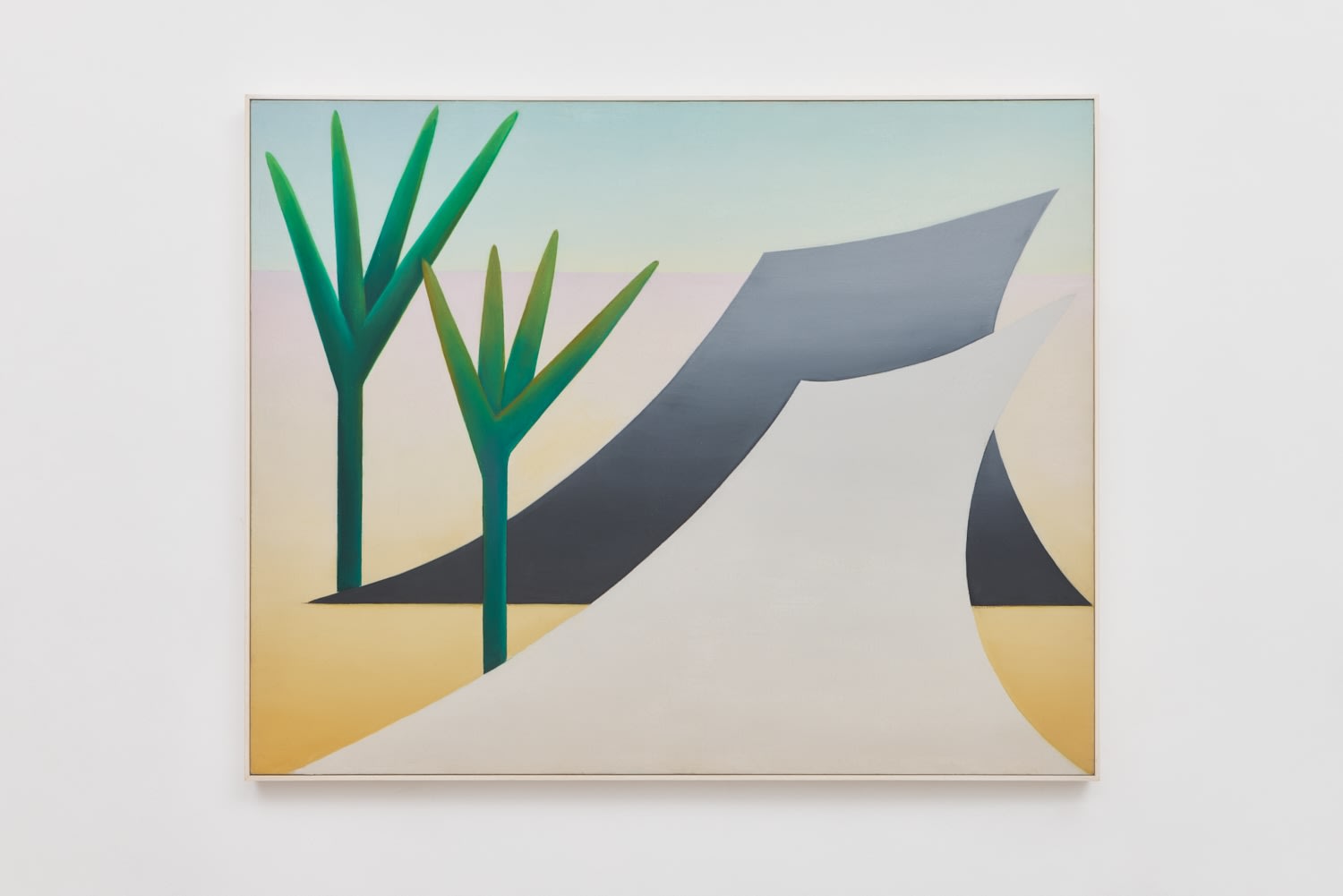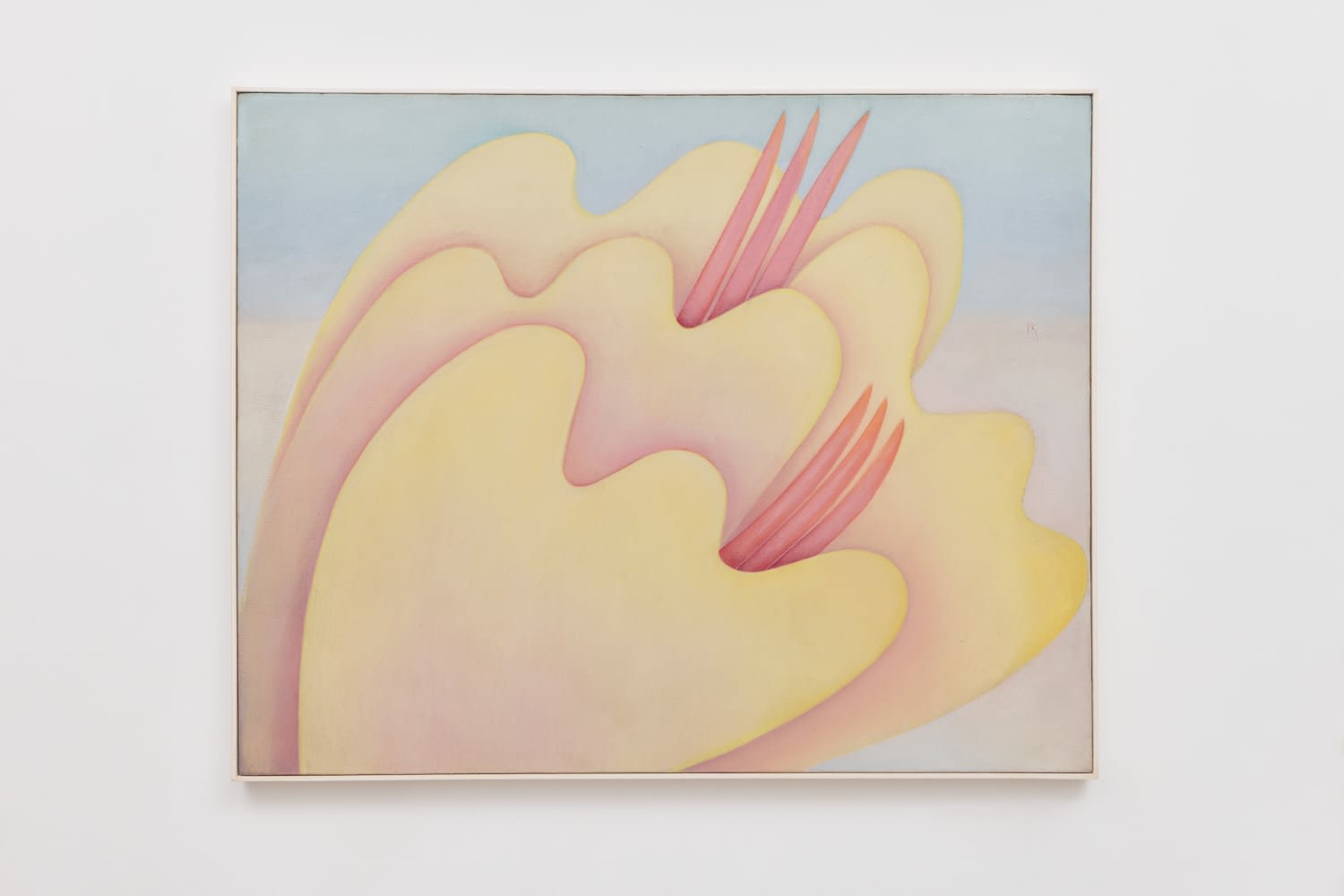Marilia Kranz: passionate as a carioca postcard
Fernanda Morse
Union and geometry: protrusion, grooves fit together, volumes interpenetrate. Marks and bodies in relief, a constructive in permanence on the realm of Eros. (...) Pistils, buds, lianas and vines. Entanglements. Ink, pollen, sweat. Dampness. Canvas, skin and petal. Space, work, body. Voracious plants, carnivorous plants. Marilia Kranz transposes the sensorial into the sensual, as if to make art were to render visible the things from the realm of Eros.
Paulo Herkenhoff, 1986
In this exhibition we see passage. The passage from an initial research to a solid work, from a young artist to a creator, from a constructive paradigm to an oneiric figuration, from sober and closed colours to a wide and open palette. It is this to follow a trajectory: not so much to see in retrospect, but to be attentive to the transitions, to what they say about the development of a work. Marilia Kranz was not only an artist in motion, but a woman in motion - and this shines through in her production. Bringing to her work more and more the warmth of the city of Rio de Janeiro, she had no shame in showing her drive for life; she is the woman who says: "how I went wild!"
Soaking the viewer in the sensuality of its exuberant flowers and fruit, the "passionate as a carioca / postcard" part of Marilia Kranz's work - which, like the Ledusha's poem that lends us this verse, dates from the 1980s - has a magnetism of its own. That the paintings Forma-flores [Form-flowers] (1985) and A montanha e a fruta [The mountain and the fruit] (1989) may speak to that effect. In the first one, the flowers are the center of the canvas, standing out against a diffuse landscape, blue-grey and unimportant next to the bulging, reddish fillets that emerge from the petals in yellow gradient. In the latter, in front of the mountain peaks, the colorful and open fruit is projected, traced in sinuous lines that create layers up to the pink and suggestive core.
Until she underwent this erotic commotion of painting, which brought her closer to research such as that of Georgia O'Keeffe, Marilia Kranz explored more stiff themes and materials, as can be seen in Crepúsculo [Dusk] (1968), which is part of a series of reliefs made with wood cuttings painted on Eucatex, presented in her first solo show, at Galeria OCA, in Rio de Janeiro, back in 1968. The art critic Frederico Morais, in the monography he wrote about the artist, sees in these "geometric cut-outs", although abstract, "figurative residues". He sees the "circles and semi-circles as if they were eyes and mouths opened", recreating "the Gestalt of the human figure". As to the series of estereformas - which's very name indicates its three-dimensionality -, Morais says there is no "figurative residue". Scheat - estereoforma (1969), entitled like the second brightest star in the constellation of Pegasus, is a painting-object molded in rigid polyurethane and dyed with automotive paint, composed by technical resources that were unusual at the time. Alternating between concave and convex forms and exploring various colours, Morais considers that, in this series, Marilia Kranz put into practice the trinomial "art-technology-new materials" in a pioneering way.
The color, an important element within Marilia's production, also helps us to perceive the passages. Between the painting Untitled (197) and Angra I (1979) we see not only the thematic correspondence - a study of straight lines and curves, abstract and geometrized forms in an undefined landscape - but the use of more closed and solid colours in relation to the gradients that she explores so much in the following years and that will never again leave her canvases. Once the apex of sensuality and sculptural figures that inhabited her landscapes passed - as in Paisagem na escultura [Landscape in sculpture] (1981) and Aterrissando [Landing] (1982) - we see in more mature works, such as Fim da guerra [End of war] (2003) and Fim de um dia [End of a day] (2006), a somewhat return to sober tones by prioritizing grey and blue gradients, which correspond to the synthetic and economic aspect that her forms and figures take on here.
With dreamlike sceneries and solemn landscapes, Marilia's painting has sometimes been likened to that of the metaphysicians who would influence Surrealism, such as Giorgio de Chirico. It is not by accident that this comparison occurs. On several occasions, the artist says she has resolved or started a painting while still asleep. For her, the link between dream and creation happened not only as a metaphorical exercise, but was an active process, transposed directly from her unconscious. Here is the speech of a full-time artist, who no longer separates art from life, inside from outside, sleep from wakefulness, without knowing whether this is really a gift:
As a woman and a professional I had to mix it all up: ink, children, shopping lists... I never knew what it was that 'peace of mind' to create, to work. I learned to do it all at the same time, in the hustle and bustle. I don't know to what extent my life is my work, or my work is my life. I work even when sleeping, how many times I have resolved a painting in my dreams, or dreamt of others which were ready and done. It is both a blessing and a torment.
From here, Marilia, we would say it is a blessing.









